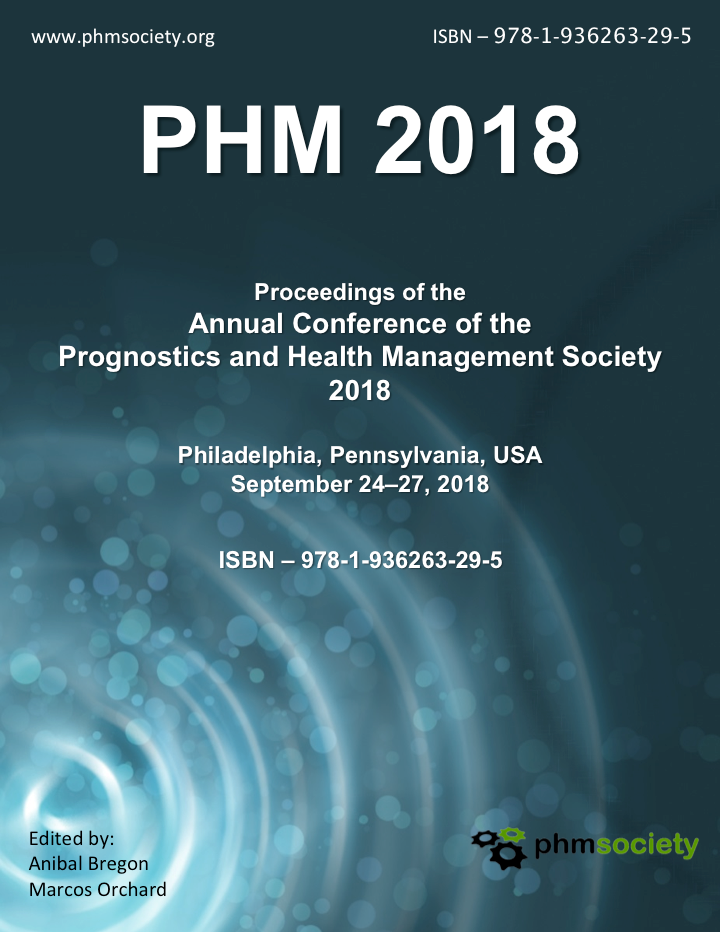Calculating Remaining Useful Life in an Embedded System
##plugins.themes.bootstrap3.article.main##
##plugins.themes.bootstrap3.article.sidebar##
Abstract
This paper presents a prognostic algorithm with low computational requirements that was implemented on an embedded system. The health of components such as shafts, bearings, and gears, is estimated based on a paradigm where condition indicators (CIs) are mapped into a health indicator (HI) for detecting and identifying faults based on vibration data. For estimating the time evolution of the HI along with remaining useful life (RUL) and its evolution, an alpha-beta and alpha-beta-gamma trackers are prosed. The estimator assumes that the plant noise is converging to a steady state over time. The advantage of the proposed filters is considerably less memory usage and computational load than a Kalman filter. The efficiency of the proposed method is demonstrated with a known fault case based on real-world data. The demonstration shows that the state observer is capable of tracking the evolution of the HI and estimates the RUL with sufficient robustness and performs favorably to previous results based on the Kalman filter. The method is well suited to computing on lower cost smart sensors.
How to Cite
##plugins.themes.bootstrap3.article.details##
Vibration, Condition Indicators, ABG Filter, RUL

This work is licensed under a Creative Commons Attribution 3.0 Unported License.
The Prognostic and Health Management Society advocates open-access to scientific data and uses a Creative Commons license for publishing and distributing any papers. A Creative Commons license does not relinquish the author’s copyright; rather it allows them to share some of their rights with any member of the public under certain conditions whilst enjoying full legal protection. By submitting an article to the International Conference of the Prognostics and Health Management Society, the authors agree to be bound by the associated terms and conditions including the following:
As the author, you retain the copyright to your Work. By submitting your Work, you are granting anybody the right to copy, distribute and transmit your Work and to adapt your Work with proper attribution under the terms of the Creative Commons Attribution 3.0 United States license. You assign rights to the Prognostics and Health Management Society to publish and disseminate your Work through electronic and print media if it is accepted for publication. A license note citing the Creative Commons Attribution 3.0 United States License as shown below needs to be placed in the footnote on the first page of the article.
First Author et al. This is an open-access article distributed under the terms of the Creative Commons Attribution 3.0 United States License, which permits unrestricted use, distribution, and reproduction in any medium, provided the original author and source are credited.
